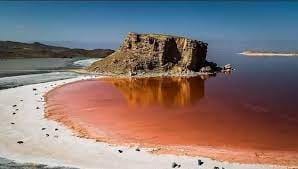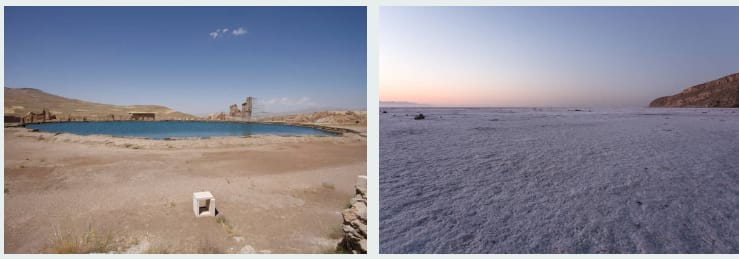The blue waters of Lake Urmia
Iran’s Lake Urmia has many distinctions to its credit. The lake is the largest in the oil-rich Middle East region and it also ranks as the third-largest saltwater lake on Earth. This lake is famous the world over and is visited by tourists aplenty. The lake provides a view of nature at its best. The beautiful turquoise waters along with the small rocky islands, which total a staggering 102, make the lake a favorite amongst tourists in general.
The lake has special importance as it is proven that the waters of the lake are full of healing properties. Besides, birds like storks, flamingoes, and pelicans appreciate the waters as an important stop on their migration routes.
The lake has a total surface area of around 2,000 sq. miles. The lake is at its longest at 87 miles and widest at 34 miles. The lake doesn’t have any outlet for water to escape. The only way water is lost is via the process of evaporation. Hence minerals and salt are present in the lake in high numbers and as a result of the high salinity, only one type of species of fish can survive the waters here.
Still, the lake is considered amongst the largest of natural habitats for Artemia, which is a very important food source for migratory birds.
The lake holds a significant place internationally as well. The entire lake is a UNESCO Biosphere Reserve.
Lake Urmia

Geographically, the lake is a crucial location. It was a major obstacle between the two major cities of Tabriz and Urmia in the East and West Azerbaijan provinces respectively. To bridge the gap, a project to build a highway across the lake was initiated in the 70s’. However, the Iranian Revolution of 1979 brought the project to a halt and a 15 km causeway was the only construction. The early years of the new millennium saw work restart on the bridge and the same was completed in November 2008 and a new 1.5 km bridge was thrown open to the public. However, the steel of the bridge has already started to rust as the high saline environment of the lake has started to take a toll on the health of the bridge even though proper anti-corrosion treatment has been applied to the structure.
Another adverse effect that could make the lake extinct is it has been shrinking for a long time now and the main cause is evaporation. The annual rate of evaporation is said to be 24 to 39 inches (0.6m to 1m). This is a great cause of concern and has raised serious doubts about the survival of this lake for the next few dynasties. However, the lake waters remain a major source to cure the disease of rheumatism.
The history of the lake tells us that the current name of ‘Urmia’ was bestowed upon the lake only in the late 70s’. However, before this period, the lake was known by various names through various generations. The ancient Persian name of the lake was Chichast, which meant glittering.
During medieval times, the lake was known as Lake Gabod in Armenian or the Persian version referred to it as Lake Kabuda. The English translation of both terms meant Azure, praising the blue waters of the lake.
The Romans had another story altogether and called it Lake Matianus. The early 30s’ saw the lake being named after a person for the first time in its history. It was named Lake Rezaiyeh, which was derived from the Shah of the Imperial state (1925 to 1941) of Iran, Reza Shah Pahlavi.

amazing
very good
amazing
good